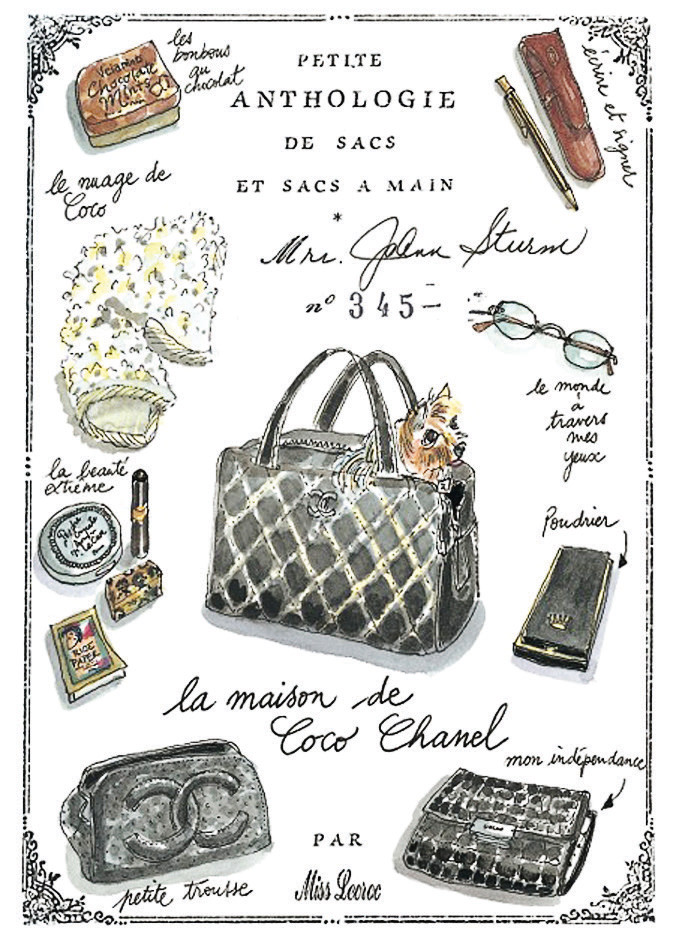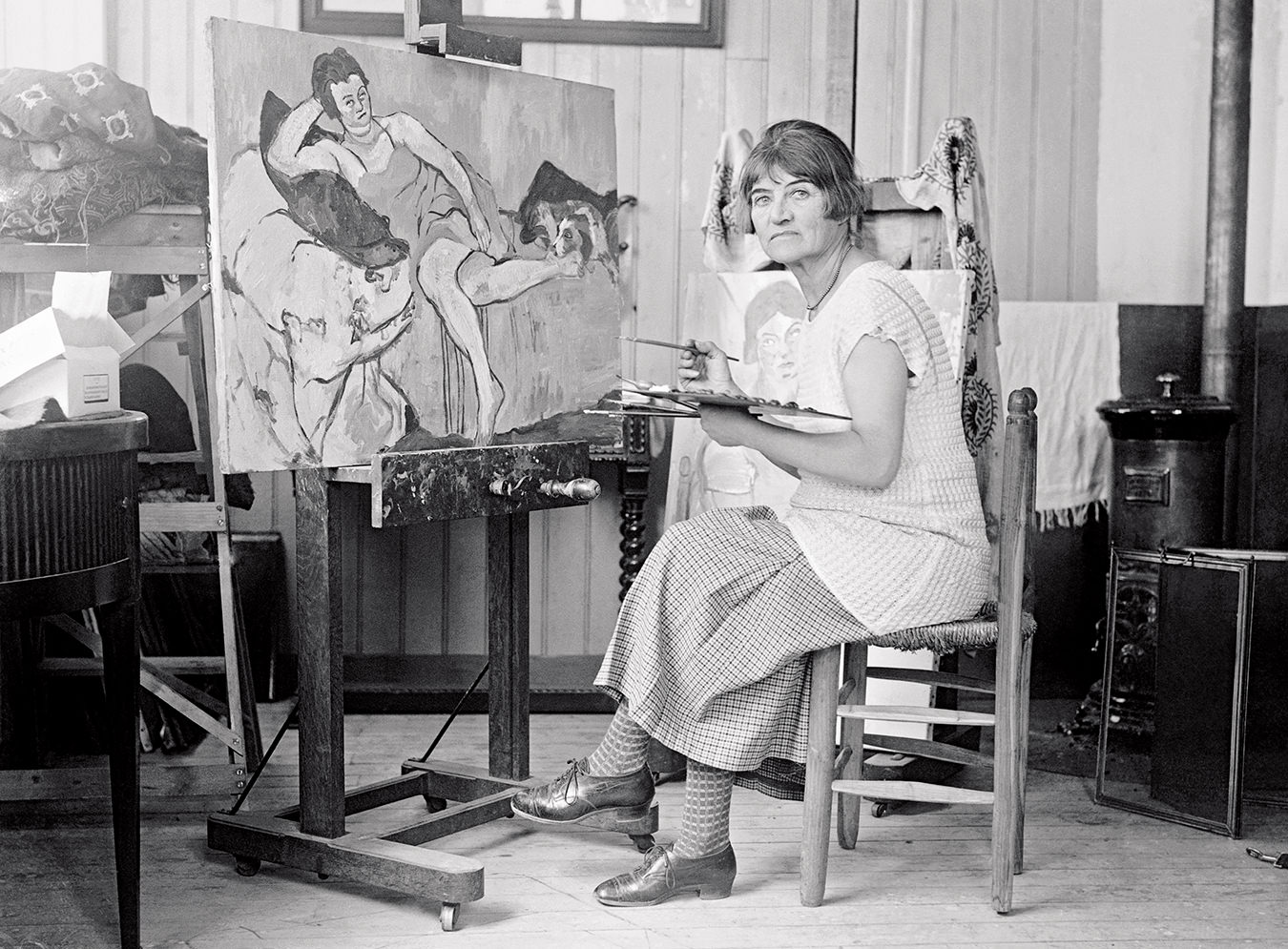-
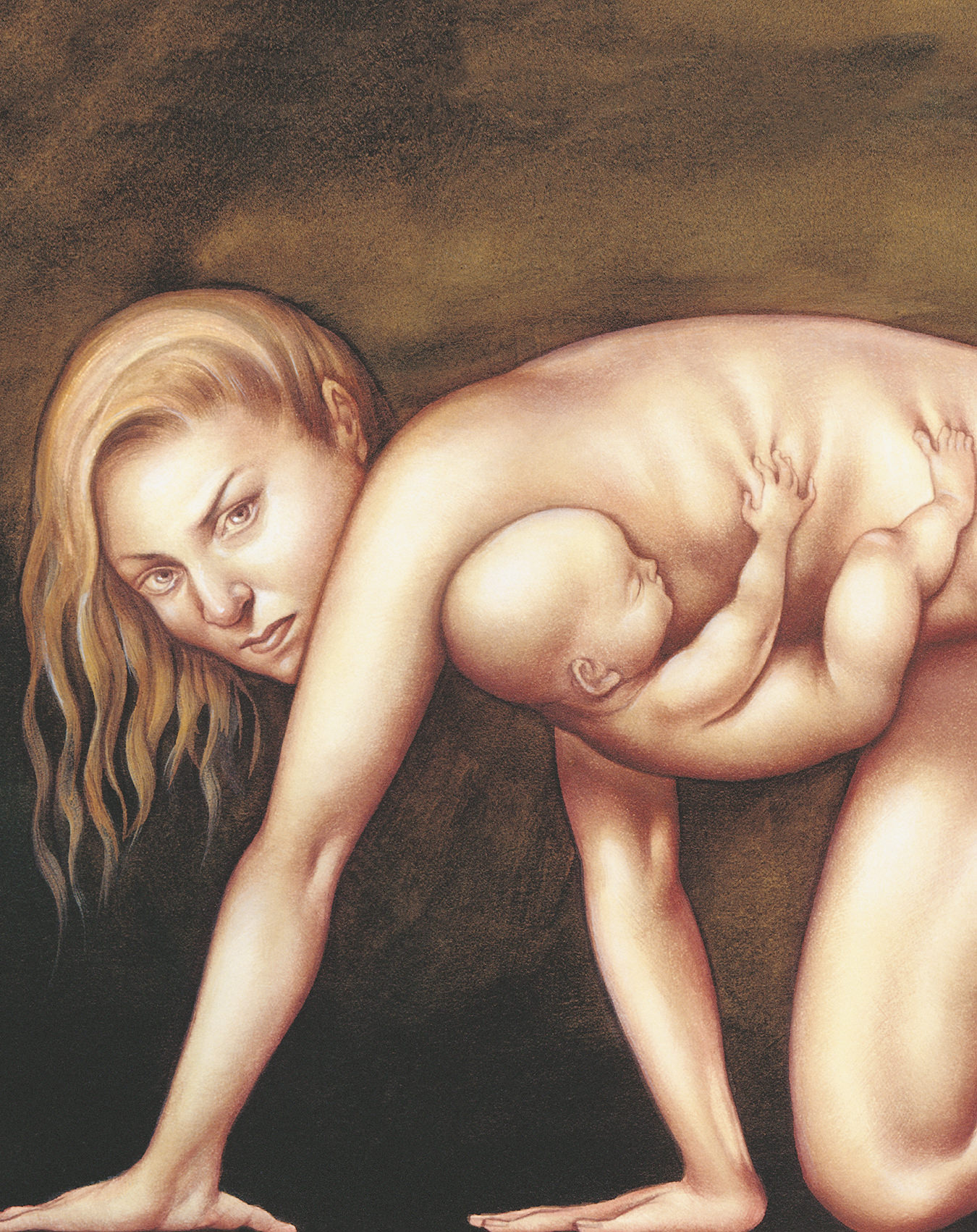
Personal work: Motherhood.
-
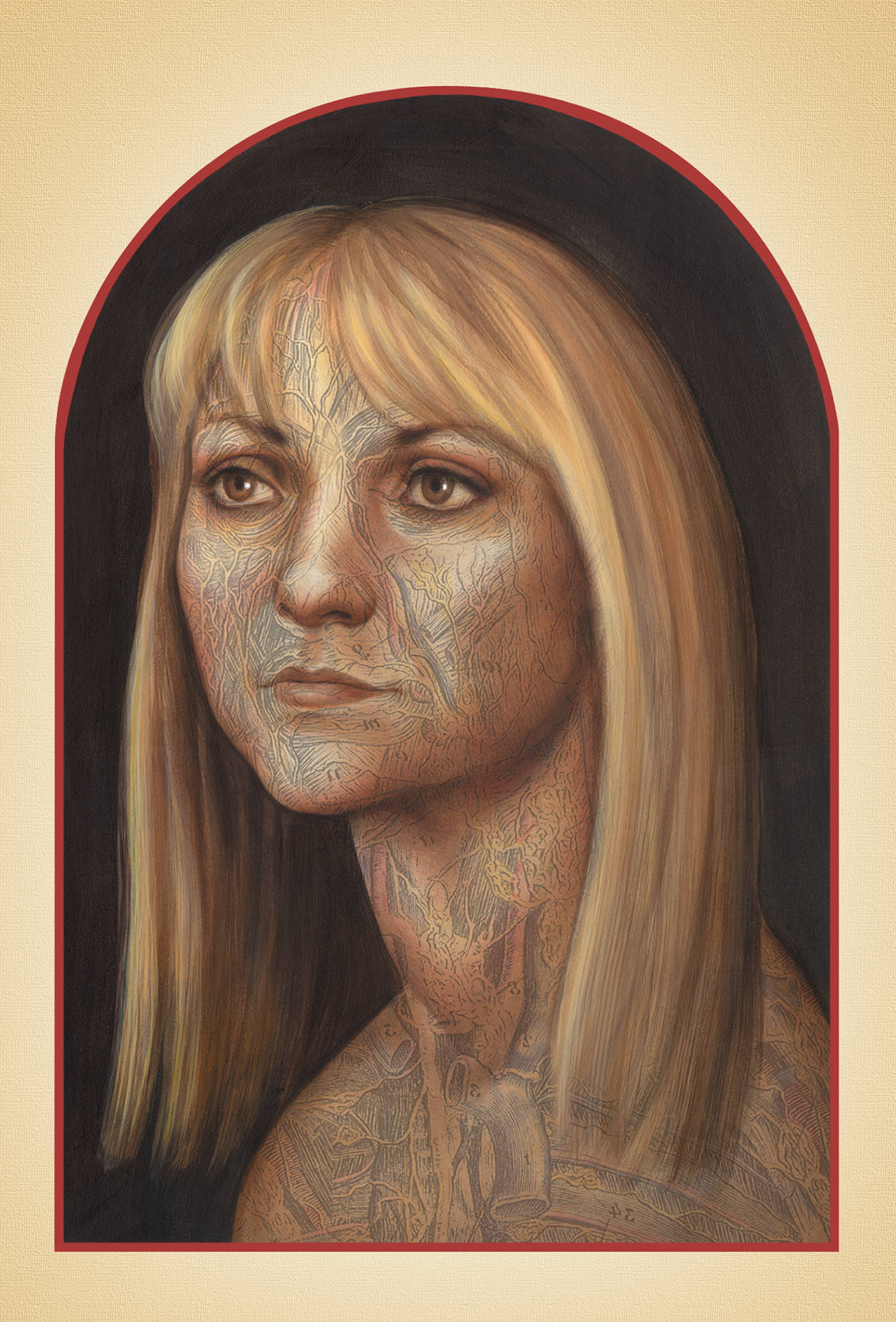
Self-portrait: Medical Illustration.
-
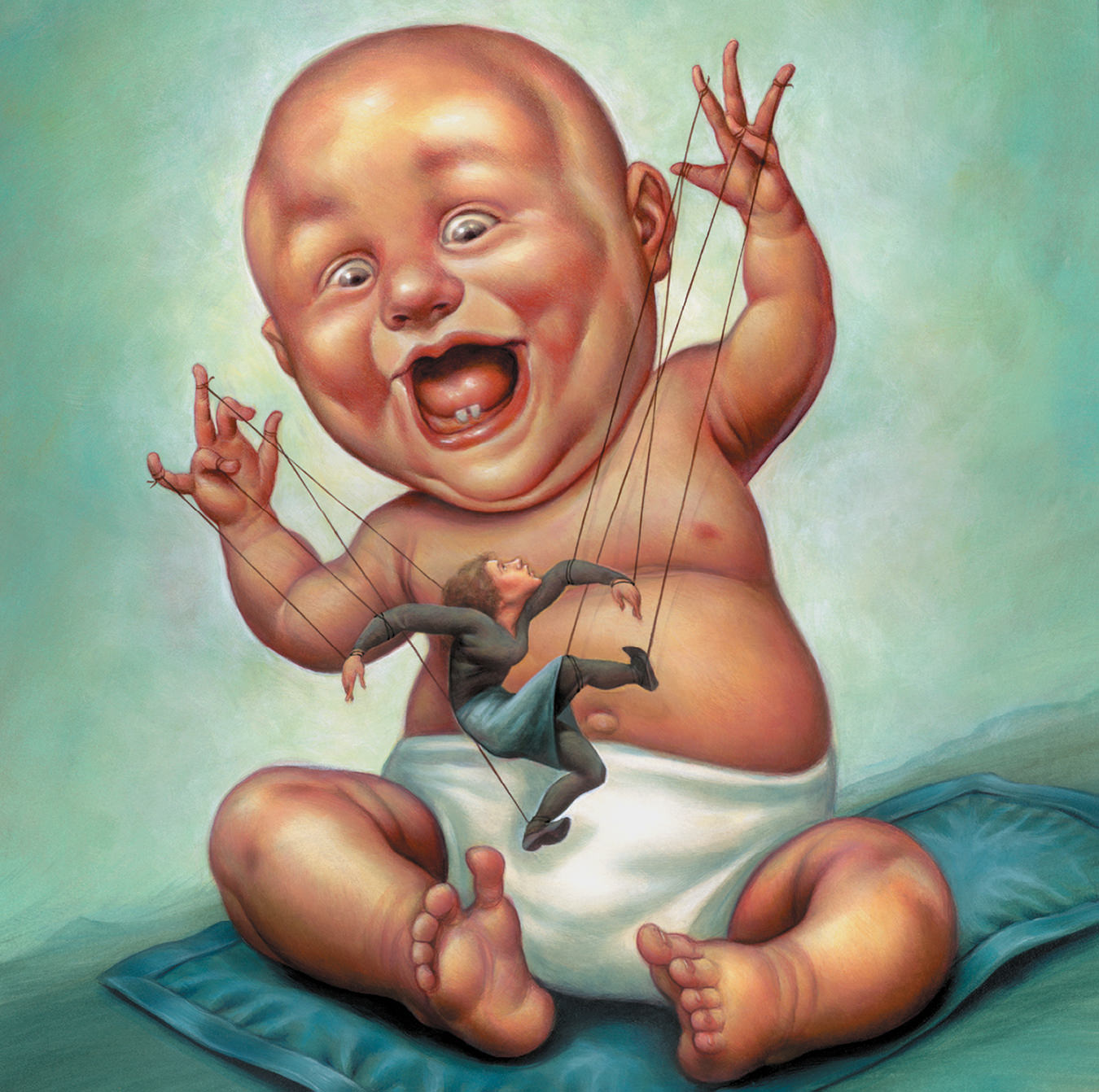
New Yorker cover: Mother’s Day.
-
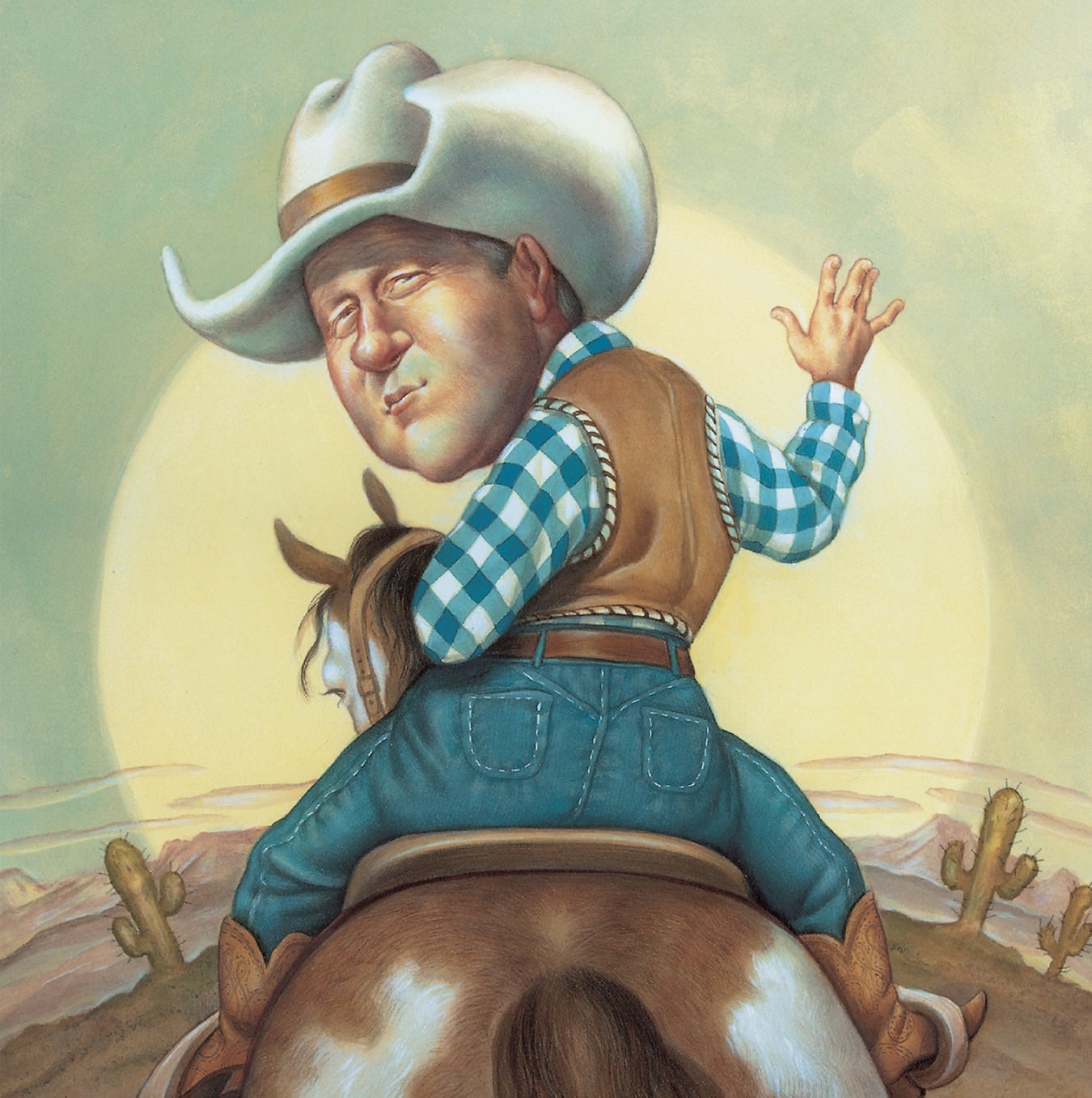
New Yorker cover: Happy Trails.
-
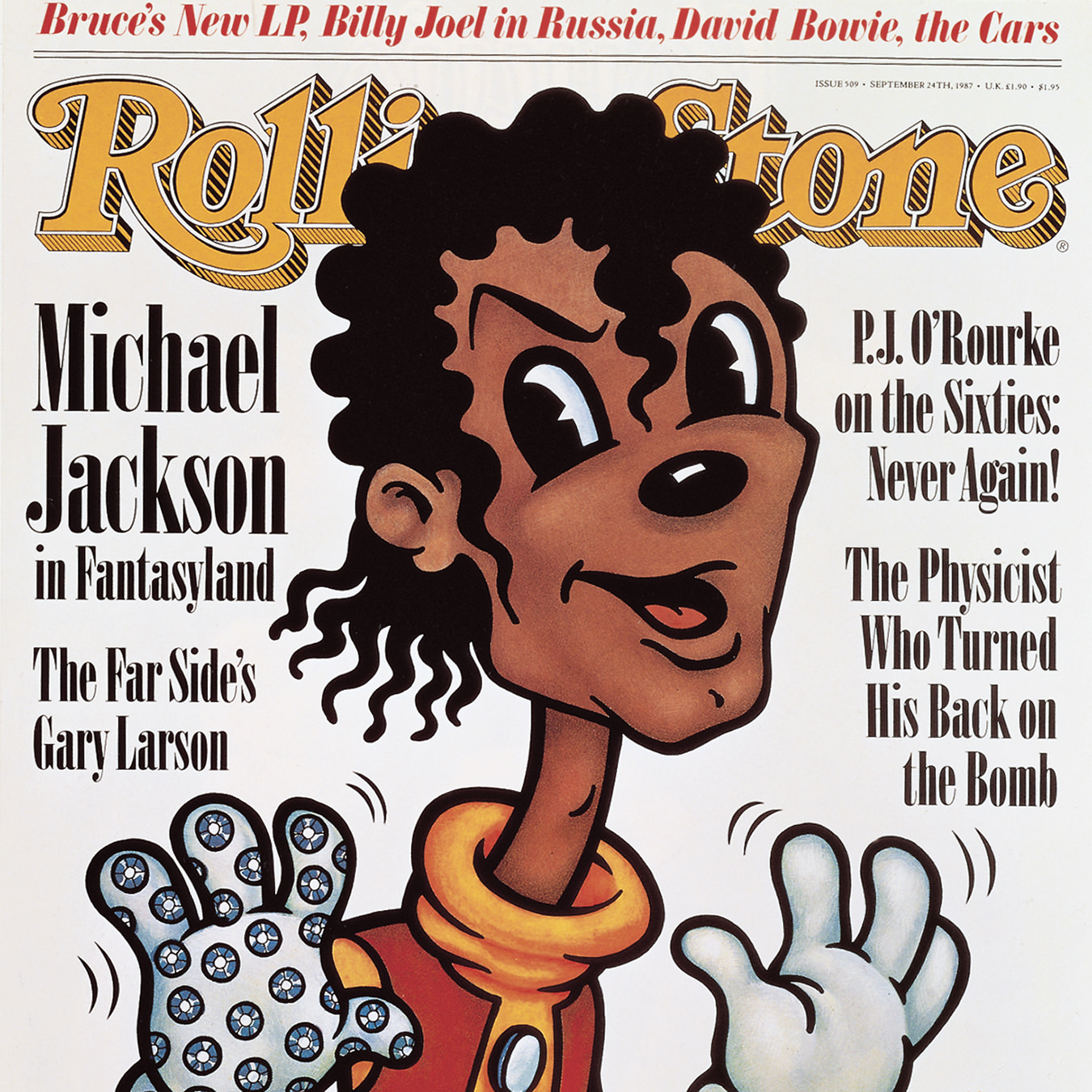
Rolling Stone cover: Michael Jackson.
-
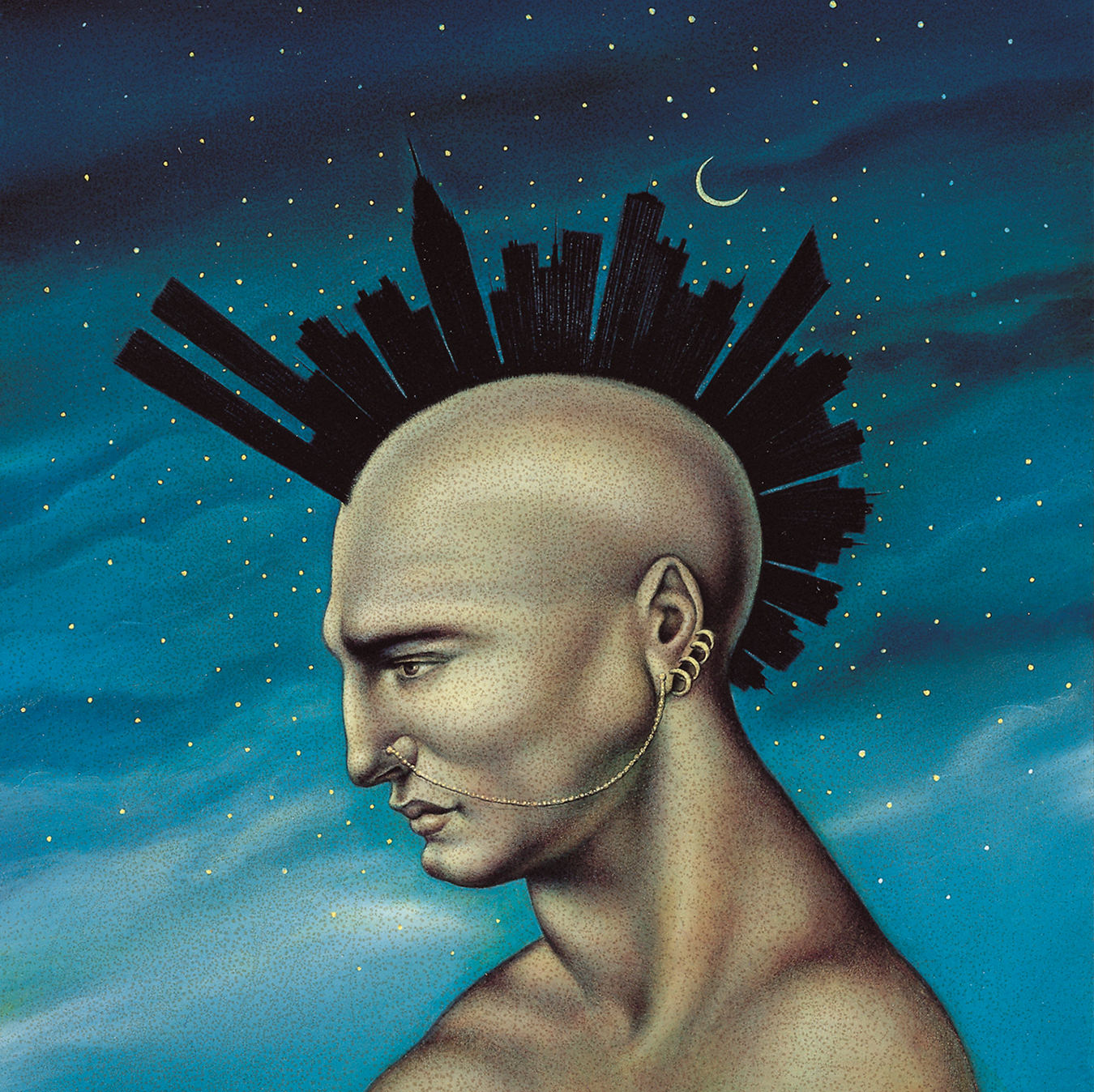
New Yorker cover: Mohawk Manhattan.
-

Personal work: Clone.
-

Child Abuse for Rolling Stone.
-
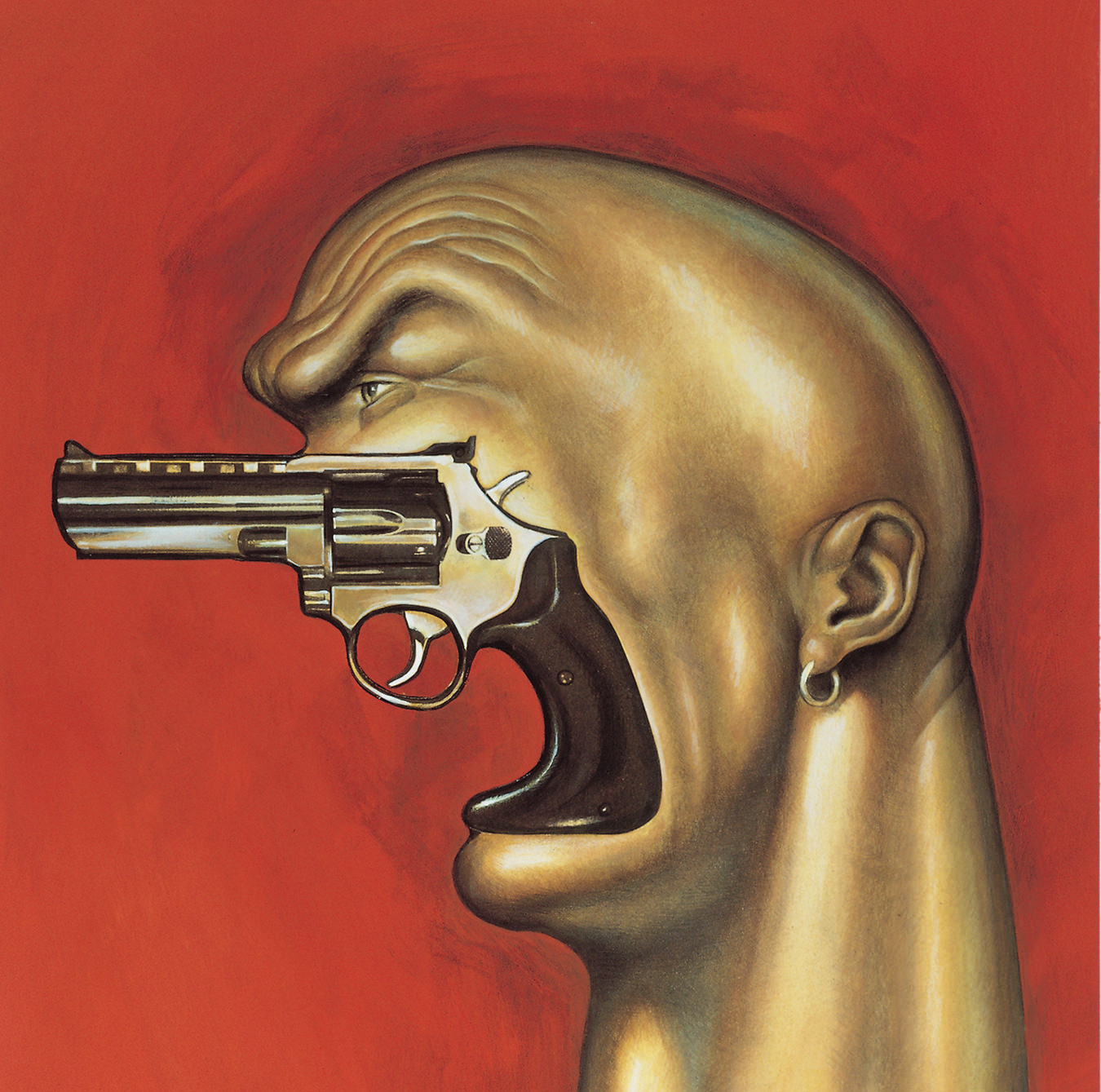
Gun Control for Vibe Magazine.
-
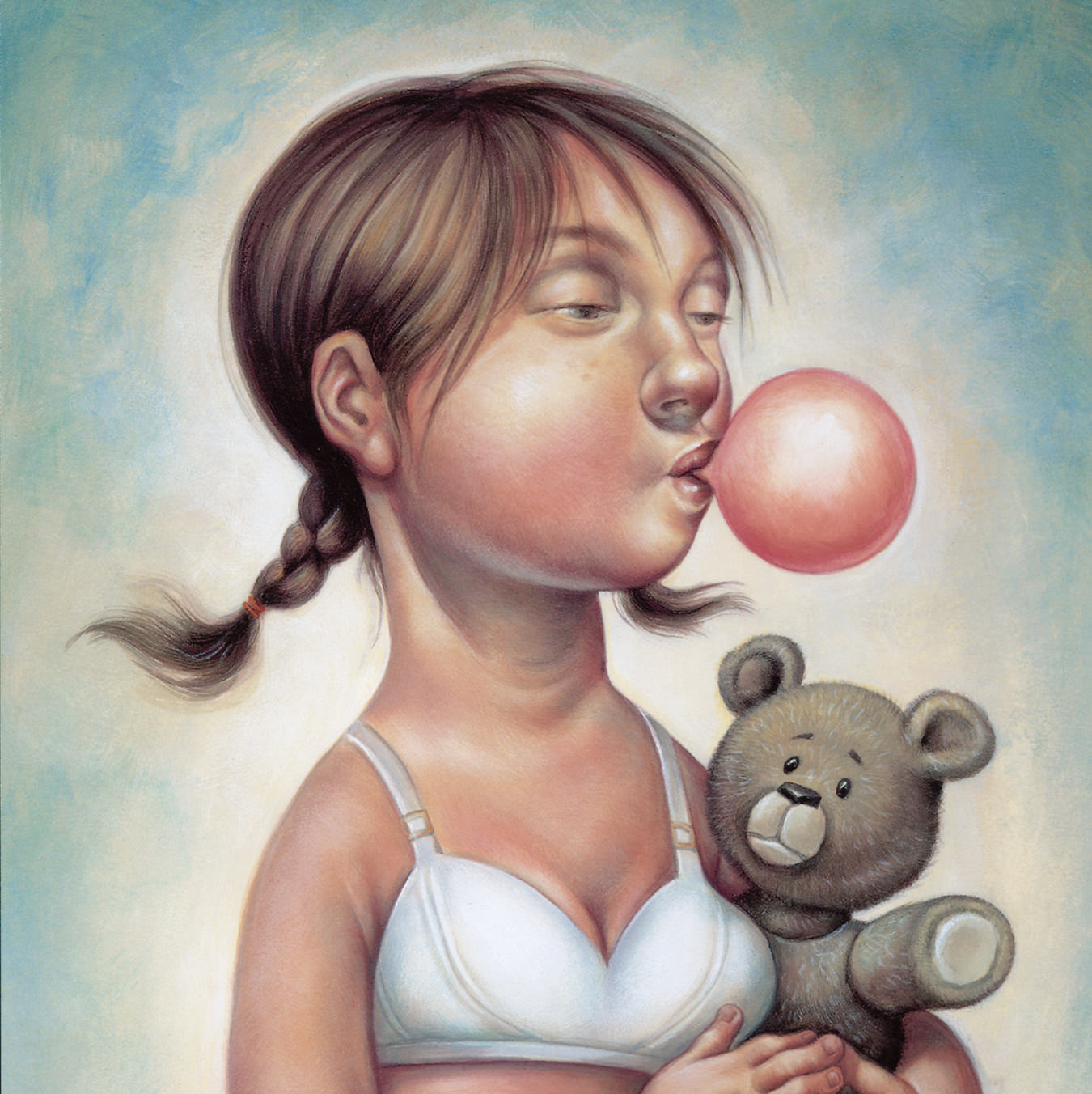
Teens Before Their Time for Time Magazine.
-
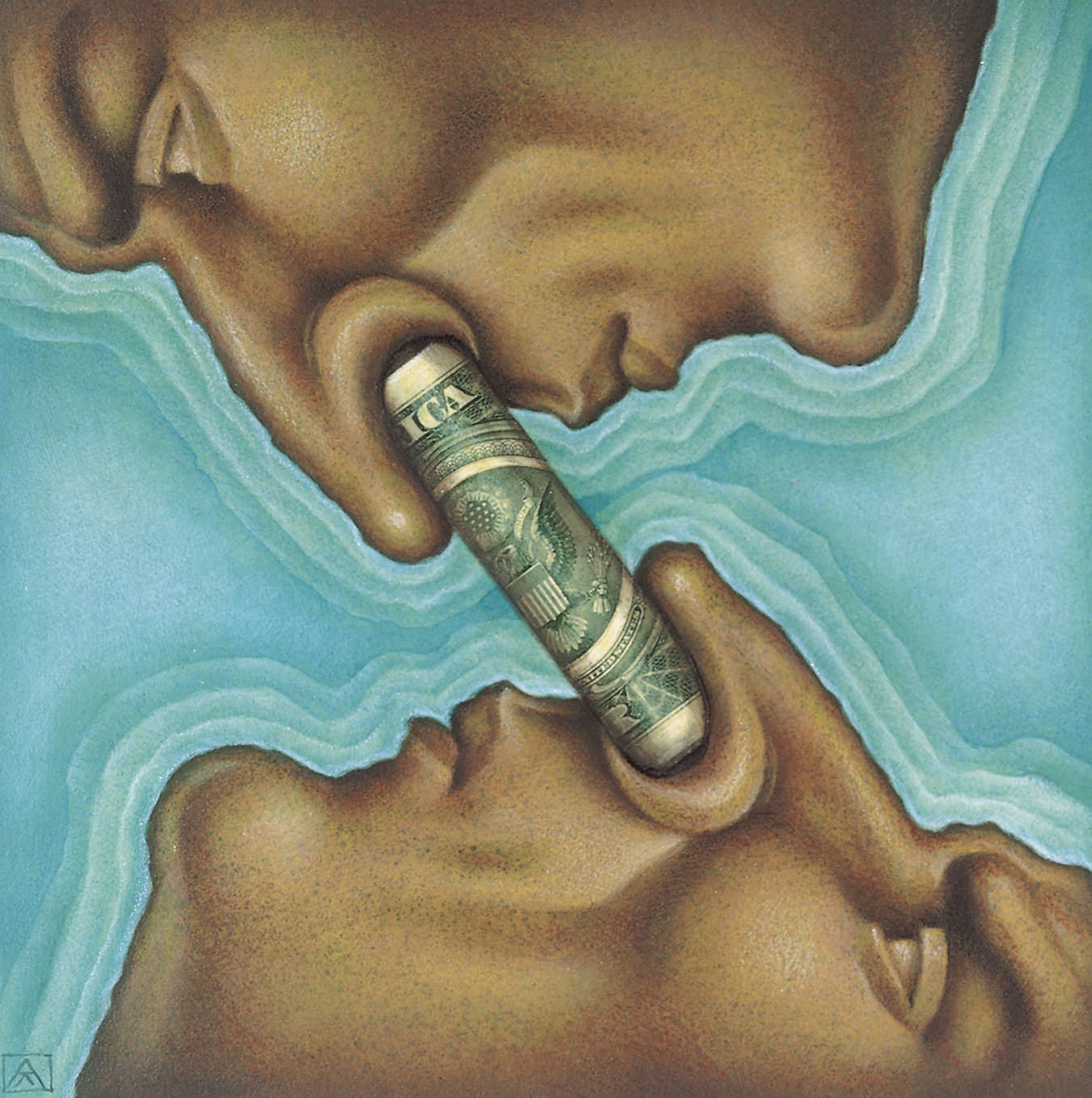
The Cocaine Trade (between North and South America) for Rolling Stone.
-

Elton John for The New Yorker.
-
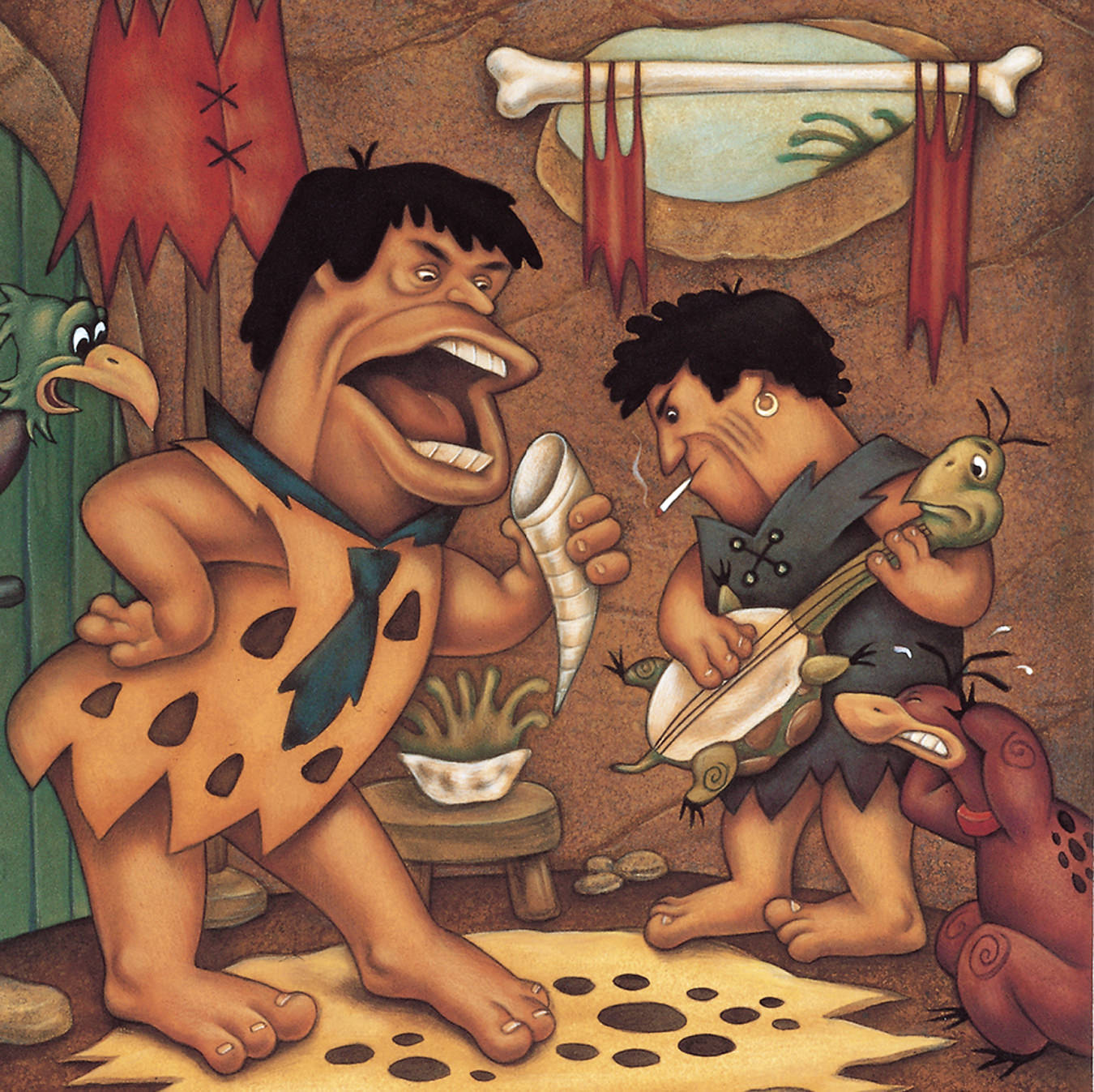
The Stones for Rolling Stone Great Moments in Rock ‘n’ Roll Series.
-

Jim Morrison as Boy Scout, C’mon Baby Light My Fire.
-
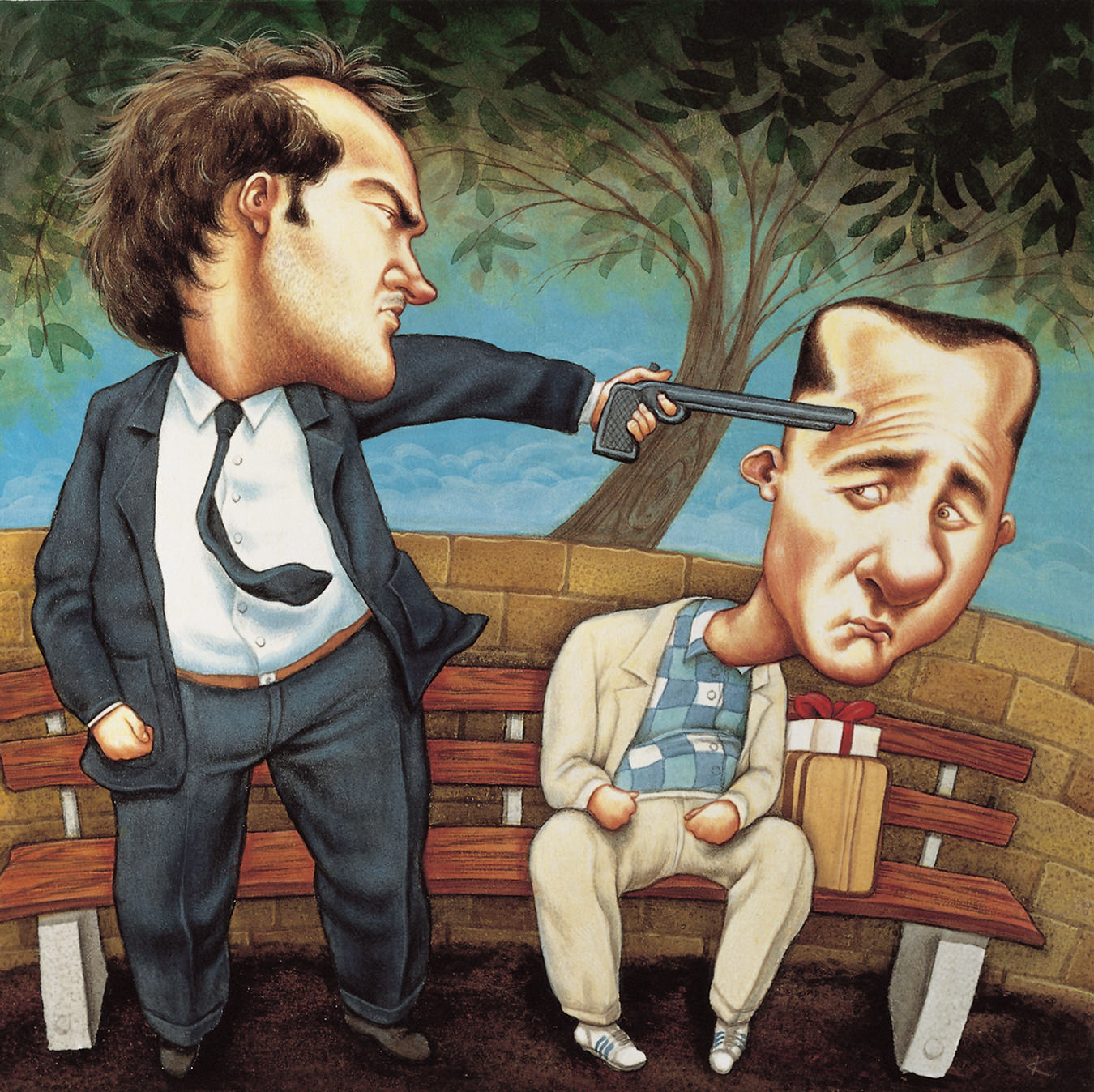
Movie review in Rolling Stone of Forrest Gump and Pulp Fiction.
Anita Kunz
The curious mirror.
Illustration has historically held a curious place in the art world. Sometimes viewed as a less valid art form than what is defined as fine art, perhaps because it is commissioned rather than self-generated, illustration, particularly magazine illustration, can arguably be viewed as a more immediate art form. It addresses social and political concerns in conjunction with the printed word. It is an active participant in a kind of multi-media presentation for the thoughtful, or not so thoughtful, reader.
In my own work, commenting on personal issues is far less interesting than participating in a larger dialogue, whether the subject is medical advances such as cloning or the cultural influences of celebrities like Madonna. I am a witness to the world around me, and my visual comments are reactions to these events. In every case, there is a fluidity, a desired response, though of course I cannot control that response; in some ways, what I really do is encourage thoughtful participation in the cultural moment.
As a child I was influenced by the work of my late uncle, Robert Kunz. He was an illustrator whose motto was “Art for Education”. He produced pictures for educational publishing, children’s books and filmstrips. Even then I saw that illustration could exist within, and contribute to, a larger societal framework.
I attended the Ontario College of Art, graduating in 1978. My work then was benign, less controversial. Studying such British artists as Sue Coe, Russell Mills and Ian Pollock, I realized that illustration could be much more personal in nature, not merely decorative. It could have a strong political or social viewpoint. I began to pursue work in the USA, where most of my clients are still based. I do not choose to kid anyone: that country’s position as cultural and political superpower is pervasive. I am Canadian, with a distinctly Canadian point of view, but we Canadians are so inundated with American culture and politics that to comment visually on various American themes is not merely easy; it is vital, and facilitated by the fact that I am one step removed.
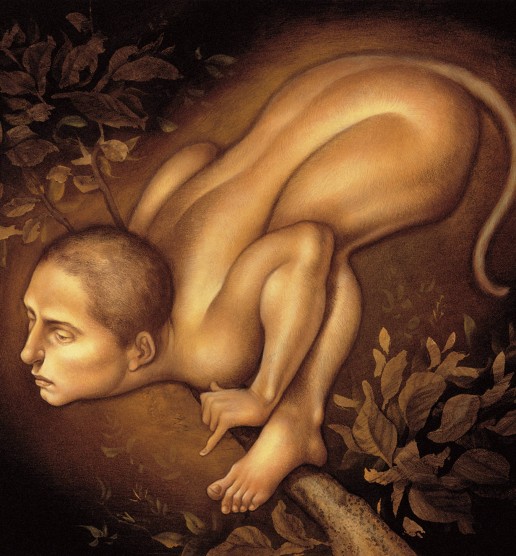
Personal work – Ape.
My magazine assignments have ranged in nature from political satire and acerbic portraiture to darker themes, such as gun control and child abuse. Freedom to express a visual opinion on a wide range of subjects is for me the reason to become an illustrator. Illustration has the power, potentially, to move people emotionally and challenge them intellectually. By its very nature, illustration can question conventions and generate reaction. In a society such as ours, where art is frequently undervalued, this carries an unparalleled power, given the exposure to a wide audience.
In magazine illustration the starting point is usually the manuscript. Rather than illustrate the story in a literal manner, I incorporate metaphors or symbols to visually articulate my ideas. Clear communication is important to me in my work. I have no desire to create work that is either elitist or didactic.
The process begins with a phone call from the magazine art director. After agreeing upon the deadline and negotiating the fee, I generally try to generate one or more rough ideas, which I transmit to the art director via fax or e-mail. Ideas can come from almost anywhere. They are often immediate responses to the theme or they occur to me when I am not consciously thinking about the assignment. Sometimes I juxtapose different elements from the story to create an arresting image.
My original paintings are relatively small. They average in size from 5”x 8” to 16”x 20”. I work in watercolour and gouache on illustration board, and I occasionally incorporate other media such as pencils, collaged elements, and clay, depending upon what the piece requires. The message and the forum in which it is to be published are more important to me than whether or not the painting itself will last for many years. I am less interested in art as commodity than art as having a viewpoint.
The entire process can take from one day to three weeks, depending upon how frequently the magazine is published. Monthly magazines allow up to two weeks for the creation of the art, and for weeklies such as Time, there is generally little more than a day to produce that art, from beginning to end. If I’m assigned a painting from Time for instance, I generally receive the assignment on a Wednesday night, sketches are approved within hours, and by Thursday late afternoon the courier must have the final art in hand for Friday delivery for an issue to be on newsstands worldwide by Monday. This is the timetable for artwork commissioned for the inside of the magazine as well as for the cover.
If we can understand our links to other species, I believe we can better understand the otherwise unexplainable urges and impulses humans exhibit, often to our own detriment.
Literally anything is possible to depict in a painted image. It is possible to paint events that have never occured and could never occur, to surrealistically alter a realistic image for a desired effect, or to juxtapose almost anything with anything else. I draw mainly from my head, without photographic reference, so my imagination has complete freedom.
Illustrators must nonetheless deal with censorship and freedom of speech issues, particularly in these politically correct times. I am acutely aware of my audience. In working with various magazines, I understand which are more tolerant of nudity for instance, and which allow for more critical political comment. I do refuse work if I feel that my political opinions might be compromised, or if I am contributing to a cause with which I disagree. (I was influenced mainly by male illustrators early in my career. Much of the creative work in the last several decades was published by magazines such as Playboy. I painted a few pictures that were published by Playboy, but always felt uneasy about that particular forum. Ultimately I came to the conclusion that because of my gender, it was inappropriate for me personally to be contributing to that magazine.) What I am saying with my work is as important to me as is the venue in which it is published; as a woman that notion is of particular importance to me.
I am frequently asked if gender plays a role in my work, or if I have ever been discriminated against because I am a woman. While I have had some negative experiences because of my gender, the fact that I am female colours how I view the world in a positive way. My work is not only influenced by my gender, but by my background, experiences, and environmental and cultural influences. In some ways, that I am an artist is more pertinent than that I am a woman, though gender is never irrelevant.
I am also frequently asked to comment upon my use of religious symbolism. I try to use a common language to embellish my ideas; certain icons have come to have certain meanings in our society, particularly religious ones. I borrow freely from them, as I do from all symbols I see as readily identifiable, common symbols, really, in order to be more clearly understood.
That is not to say my work is not sometimes perceived differently from my intentions. When producing a portrait I sometimes try to poke gentle fun at the subject, but never to malign the person. Despite this, I have been grossly misunderstood. I painted a portrait of Michael Jackson several years ago, which was used as a cover for Rolling Stone magazine. I painted him in the style of a Disney character, because at that time he had a mysterious, enigmatic, almost cartoon-like persona. The Disney reference was overlooked in Britain, where the assumption was that I had painted him as a golliwog, an unfortunate book character that is extremely racist in nature. The New York Times Magazine used my painting of Hillary Clinton as Joan of Arc, for an article entitled “The Politics of Virtue”. Despite the fact that I attempted to paint a bemusedly heroic picture, some readers assumed the portrait was mocking, sarcastic.
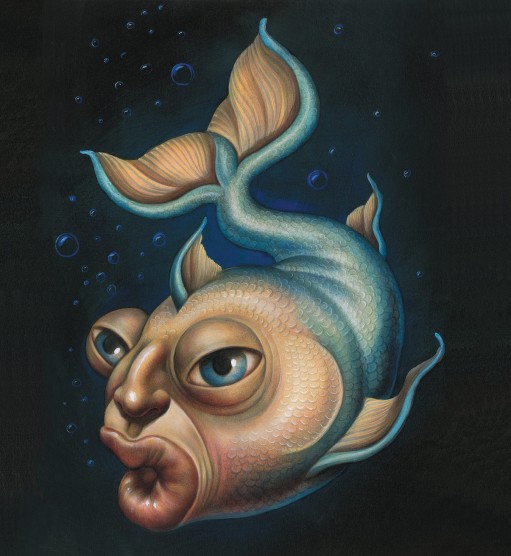
Personal work – Fish.
Placing myself and my visual opinions before public scrutiny has had some interesting results. I have been, at various times, labelled anti-woman, anti-Catholic, anti-Semitic; I’ve been stalked and I’ve been sued. Despite the unfavourable reactions I sometimes generate with my work, or in some cases because of them, I continue to receive commissions to do caricatures of political figures and celebrities.
If I were to identify one evolving change in the illustration world, it is the decreasing emphasis on serious conceptual subject matter and an increase in portraiture that is more palatable and humourous rather than acerbic. We live in such a celebrity-obsessed society that magazines frequently perform the function of advertising famous peoples’ lifestyles, make-up, and personal lives. Gone, largely, from the magazines is fiction that previously had a forum. Since September 11, gone too is much of the political criticism that was routinely part of editorial content. Irreverent humour is not necessarily valued, because of the political climate in which we find ourselves. These things tend to be cyclical, though, and I am confident that the need for astute, suggestive and intellectual illustration will never cease.
The line between the ideal function of magazines as purveyors of ideas and news, and the reality of magazines as advertisements, is of increasing concern to me. There is talk of the death of print. Though this is, to paraphrase Mark Twain, premature, the internet has opened up many alternative possibilities in this new information age. What was previously Time Life is now AOL Time Warner. Intellectual property (and that certainly includes illustration) is the new commodity. Bill Gates and Mark Getty together own over 135 million images and there is much discussion about the ramifications of their owning and controlling such a large part of the visual industry. Whether magazines can continue to prosper with the advent of the new technologies, and whether or not the corporations ultimately dictate most of the content, remains to be seen.
In recent months, aside from my editorial work, I have done a fair amount of personal, uncommissioned imagery. No self-censorship, but free description of ideas into paintings. I have produced a series of anthropomorphic images based on the significant similarity between the DNA (and other biological material) of different members of the animal kingdom, humans included. If we can understand our links to other species, I believe we can better understand the otherwise unexplainable urges and impulses humans exhibit, often to our own detriment. I am also working on a series of paintings that describe different aspects of womanhood.
Longevity in the somewhat fickle, often trend-oriented world of illustration is fairly rare. The question becomes how to remain true to one’s own vision while remaining viable as a social commentator. Flexibility is key. Most important, though, is to remain a student, constantly studying human nature. To observe requires discipline, to draw requires training, to be a participatory artist requires, above all, a sense of humour, and rigour. The results will, in any event, speak for themselves.



